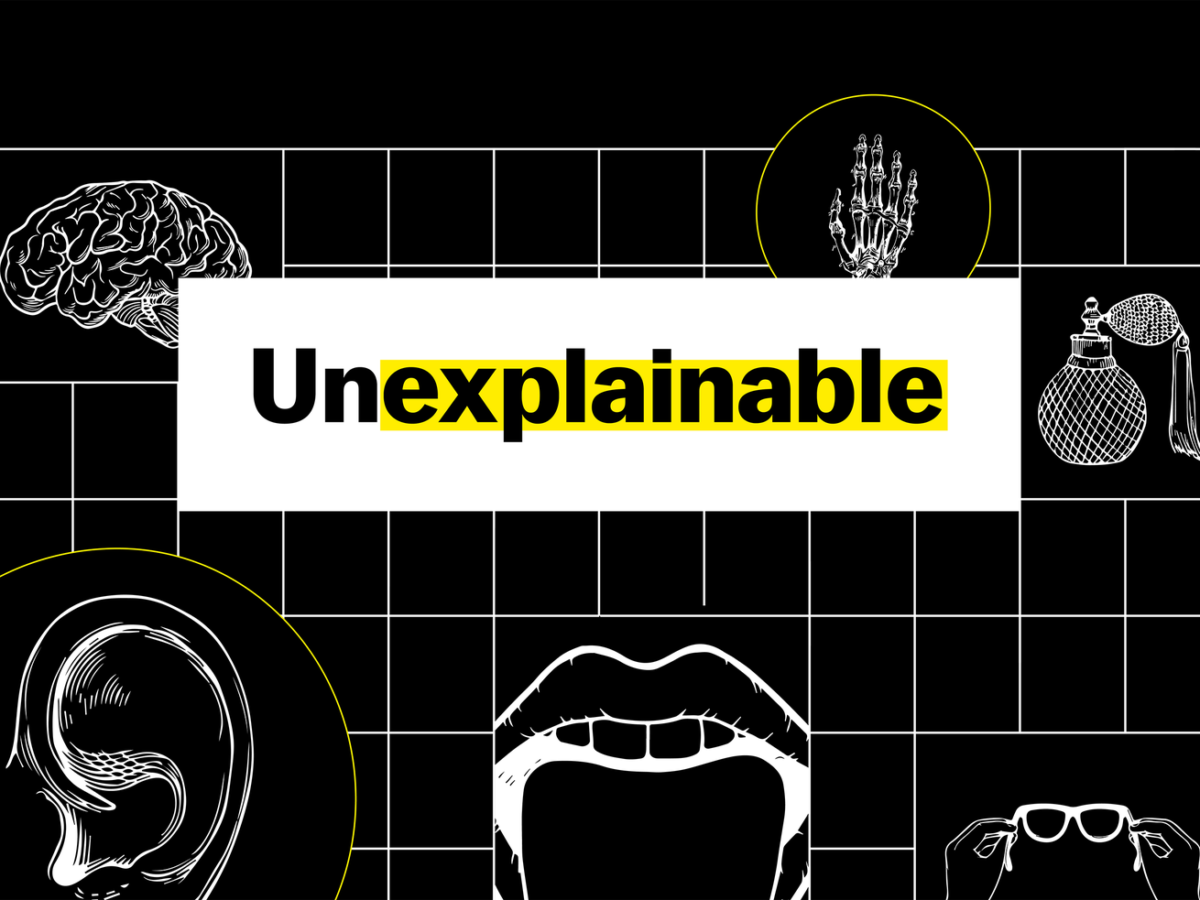This post was originally published on this site

Our senses create our reality. They can trick us, but also teach us.
In the 1970s, psychologist Diana Deutsch discovered an audio illusion that made her feel like her brain was a little bit broken. “It seemed to me that I’d entered another universe or I’d gone crazy or something … the world had just turned upside down!” Deutsch recalls.
Like the visual illusions that trick our eyes into seeing impossible things, the audio illusion Deutsch discovered in the 1970s fooled her ears. You can hear Deutsch’s “Octave Illusion” here for yourself. Make sure you’re wearing headphones (it doesn’t work with speakers).
Once you press play, a pattern of tones is presented in each ear. One is a repeated pattern of a high-pitched tone followed by a low-pitched tone, and the other is the opposite: a low tone followed by a high tone.
The key: Both ears are receiving both high-pitched and low-pitched tones, but you will likely hear just the high tone on one side of your head and the low tone on the other.
Sometimes illusions make us feel like, as Deutsch says, something is off with our minds. But really, these misperceptions actually show how our brains work.
Sound enters our ears, light enters our eyes, chemicals splash up in our nose and mouth, and mechanical forces graze our skin. It’s up to our brains to make sense of what it all means and create a seamless conscious experience of the world.
Illusions teach us that our reality isn’t a direct real-time feed coming from our ears, eyes, skin, and the rest of our bodies. Instead, what we experience is our brain’s best guess.
Sometimes, when the information coming in to our sensory organs is confusing, our brains have to edit parts out. Other times, our brains have to fill in some gaps with outright guesses. Our reality, ultimately, is constructed by our brains, built from our imperfect senses, and informed by our past experiences.
But how do our brains do this? And how can scientists use that information to help people, invent new tools, or understand ourselves better? That’s the topic of Making Sense, a six-part series from Unexplainable, Vox’s podcast on unanswered questions in science.
Our first episode explores our sense of hearing, and what the insights derived from Deutsch’s research mean for a man who lost his, and then tried to listen to a favorite piece of music again. Listen to the full episode wherever you listen to podcasts. And transcripts of all of our episodes are available here.
Other episodes in the series include the following:
Touch
Babies born prematurely can experience a dozen or more painful procedures a day in the first weeks of their lives, and the volume of all that pain can leave lasting marks on brain development. But doctors have limited options for soothing these infants. Scientists suspect there’s healing power in a parent’s touch, but it will take more than research to harness it.
Listen on Apple Podcasts, Spotify, Stitcher, or wherever you find podcasts.
Smell
A long-held dream of smell researchers is to build an artificial nose — a device capable of replacing bomb-sniffing dogs. A scientist has devised a machine that can smell. The thing is: He doesn’t know how it works. But is that really a problem?
Listen on Apple Podcasts, Spotify, Stitcher, or wherever you find podcasts.
Taste
How many tastes are there? For thousands of years, there was a simple answer: four. Sweet, sour, salty, and bitter. But since umami was recognized as a fifth taste 20 years ago, the question has become a lot more complicated. What makes a taste: Is it the existence of a particular taste receptor on the tongue? A perceptual experience? A history of documentation? In the case of umami, all of this mattered.
Listen on Apple Podcasts, Spotify, Stitcher, or wherever you find podcasts.
Sight
In 2005, a neurologist had a patient come to him after surgery without the ability to form mental images. After finding more people with this condition, he named it aphantasia, the inability to picture objects in the mind’s eye. It’s a new area of research, but it raises questions about what mental images even are, why we have them, and how they relate to our sense of sight.
Listen on Apple Podcasts, Spotify, Stitcher, or wherever you find podcasts.
The “sixth sense”
Proprioception is an awareness of where our bodies are in space. Researchers at the National Institutes of Health (NIH) are studying people who lack this mysterious sense, and through them, are learning about the brain’s remarkable ability to adapt when a sense is missing.
Listen on Apple Podcasts, Spotify, Stitcher, or wherever you find podcasts.
Further reading: How our senses build the world
- The silent “sixth” sense — Proprioception is the body’s mysterious ability to locate our limbs, even in darkness. We’re just beginning to understand it.
- “Reality” is constructed by your brain. Here’s what that means, and why it matters. — What the science of visual illusions can teach us about our polarized world.
- Intellectual humility: the importance of knowing you might be wrong — Why it’s so hard to see our own ignorance, and what to do about it.
- Our amazing sense of touch, explained by a Nobel laureate
- Let’s obliterate the myth that humans have a bad sense of smell
